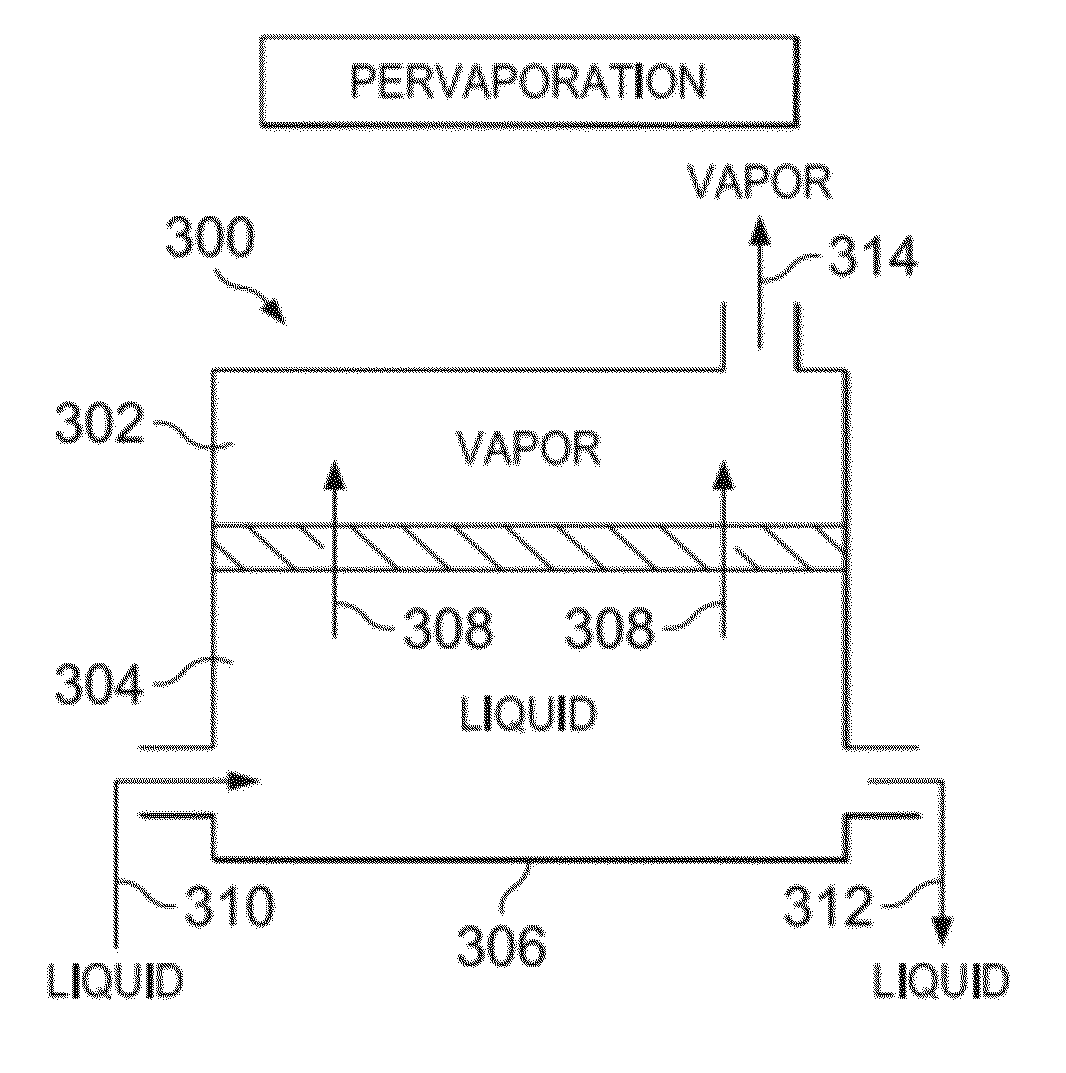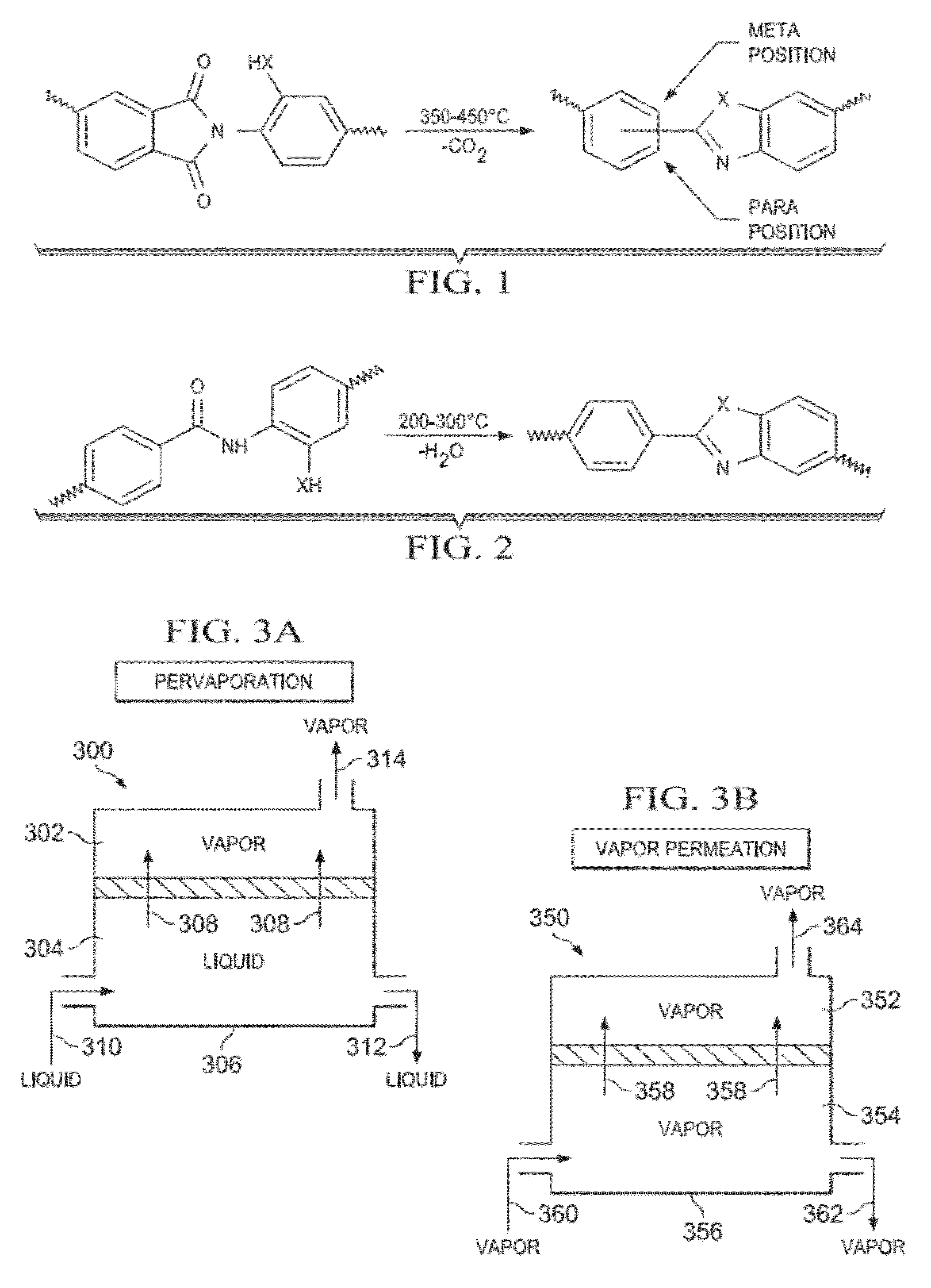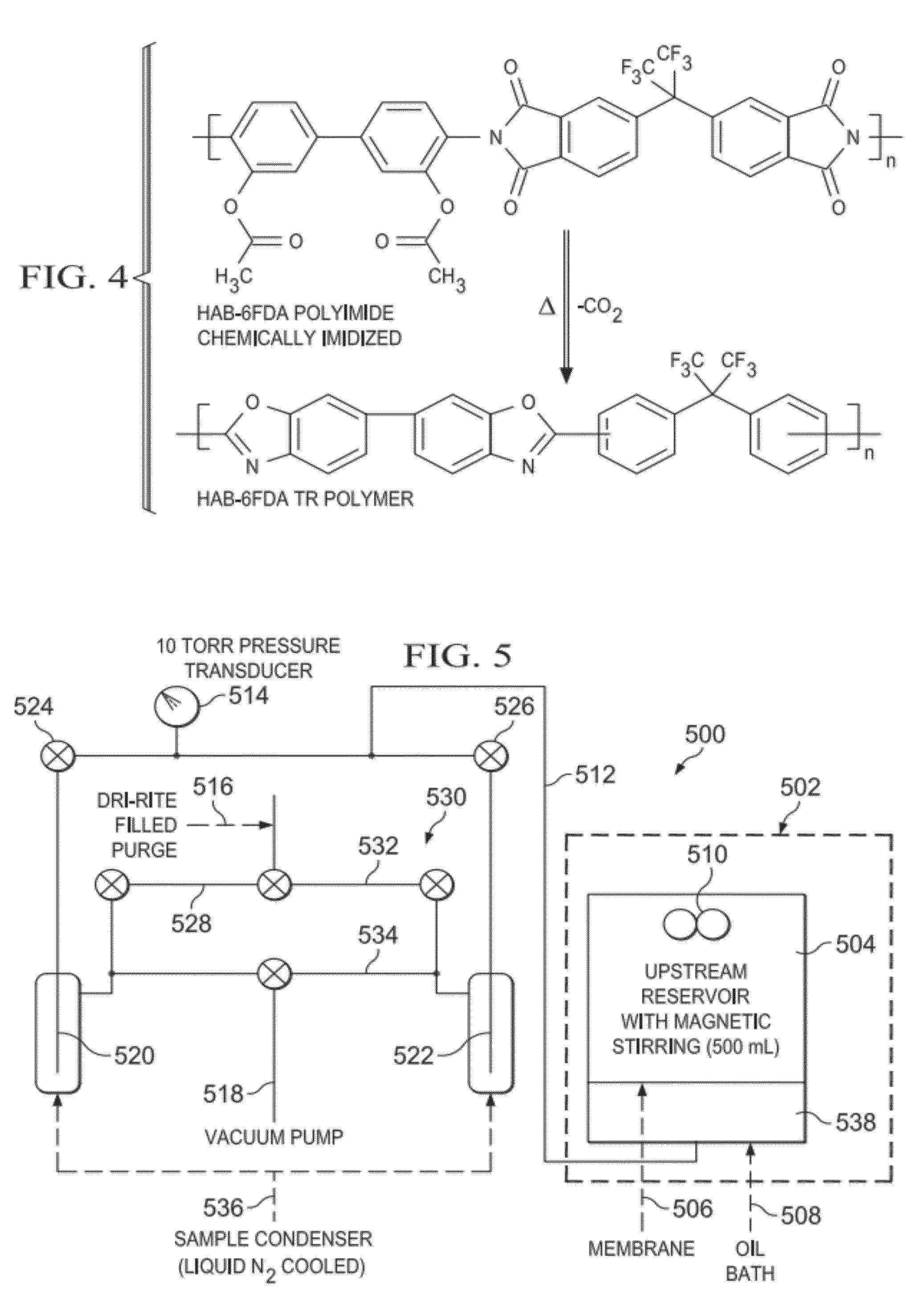Thermally Rearranged (TR) Polymers as Membranes for Ethanol Dehydration
a technology of ethanol dehydration and thermorearranged polymers, which is applied in the direction of separation process, filtration separation, distillation, etc., can solve the problems of increasing the flux across the membrane, the physical footprint of industrial separation process, and the inability to meet all of these requirements, and achieve excellent separation characteristics and high chemical and thermal stability.
- Summary
- Abstract
- Description
- Claims
- Application Information
AI Technical Summary
Benefits of technology
Problems solved by technology
Method used
Image
Examples
example i
[0082]Transport Properties of Chemically Imidized HAB-6FDA TR 350 1 hour. The TR platform of materials was tested for ethanol / water separations using the chemically imidized HAB-6FDA (HAB-6FDA-C) family of TR materials (FIG. 4). This polymer was synthesized by first dissolving 3.5830 grams of 3,3′-dihydroxy-4,4′-diamino-biphenyl (HAB) in 40 mL of dimethylacetamide (DMAc) under nitrogen atmosphere. Next, 7.3609 grams of 2,2′-Bis-(3,4-dicarboxyphenyl)hexafluoropropane dianhydride (6FDA) were added with 16 mL of DMAc, and the reaction was stirred for eight hours. Next, the resulting polyamic acid was chemically imidized by adding 53 mL of DMAc, 25 mL of acetic anhydride and 21 mL of pyridine. The reaction proceeded for 13 hours under nitrogen atmosphere at room temperature. Then the temperature was raised to 60° C. and the reaction was run for another hour (12)(13)(14). The polymer was precipitated in a mixture of 2.0 L of ethanol and 0.5 L of water.
[0083]The polymer film was solution ...
example ii
[0092]Transport Properties and Stability of Thermally Imidized HAB-6FDA and Corresponding TR Polymers. An overview of the synthesis route for thermally imidized HAB-6FDA (HAB-6FDA-T) is shown in FIG. 9. First, the two monomers, 6FDA and HAB, were dried under vacuum for 12 hours at 200° C. and 80° C., respectively. The solvent, 1-methyl-2-pyrrolidinone (NMP) was dried by distilling over calcium hydride for at least 2 hours. The 1,2-dichlorobenzene (ODB) and N,N-dimethylacetamide (DMAc) were used as received. First, 4.3248 g HAB (20 mmol) was dissolved in 57.8 mL of NMP in a 500 mL three-necked round-bottomed flask under nitrogen atmosphere. Then 8.8850 g of 6FDA (20 mmol) were added with 57.8 mL of NMP to make a 10% (w / v) solution. After stirring for 12 hours at room temperature, 77 mL of NMP and 40 mL of ODB were added to the polyamic acid solution. The temperature was raised to 180° C. and held overnight to imidize the polyamic acid. The resulting brown solution was cooled to room ...
example iii
[0112]Influence of Ethanol / Water Exposure on Transport Properties for HAB-6FDA-T TR450. For further evaluation of membrane stability, two polymer films, HAB-6FDA-T TR450 and BPDA-ODA were prepared. UBE Industries, Ltd produces BPDA-ODA as hollow fiber membranes (20), and they advertise that they sell alcohol dehydration membranes (15), making BPDA-ODA a relevant reference material. The BPDA-ODA film was prepared from 4,4-biphthalic anhydride, (BPDA, 97+%, TCI) and oxydianiline (ODA, 99%, TCI). First, ODA was added into a flask and dissolved in NMP with stirring. After 20 min, an equimolar amount of BPDA was added with additional NMP to make a total concentration of ODA and BPDA of 10 wt %. The reaction was conducted at room temperature with stirring under nitrogen for approximately 20 hours, resulting in a poly(BPDA-ODA) amic acid solution. The solution was filtered through a 5 μm PTFE syringe filter and cast on a glass plate to produce a film for testing. The solvent, NMP, was evap...
PUM
| Property | Measurement | Unit |
|---|---|---|
| Temperature | aaaaa | aaaaa |
| Temperature | aaaaa | aaaaa |
| Temperature | aaaaa | aaaaa |
Abstract
Description
Claims
Application Information
 Login to View More
Login to View More - R&D
- Intellectual Property
- Life Sciences
- Materials
- Tech Scout
- Unparalleled Data Quality
- Higher Quality Content
- 60% Fewer Hallucinations
Browse by: Latest US Patents, China's latest patents, Technical Efficacy Thesaurus, Application Domain, Technology Topic, Popular Technical Reports.
© 2025 PatSnap. All rights reserved.Legal|Privacy policy|Modern Slavery Act Transparency Statement|Sitemap|About US| Contact US: help@patsnap.com



